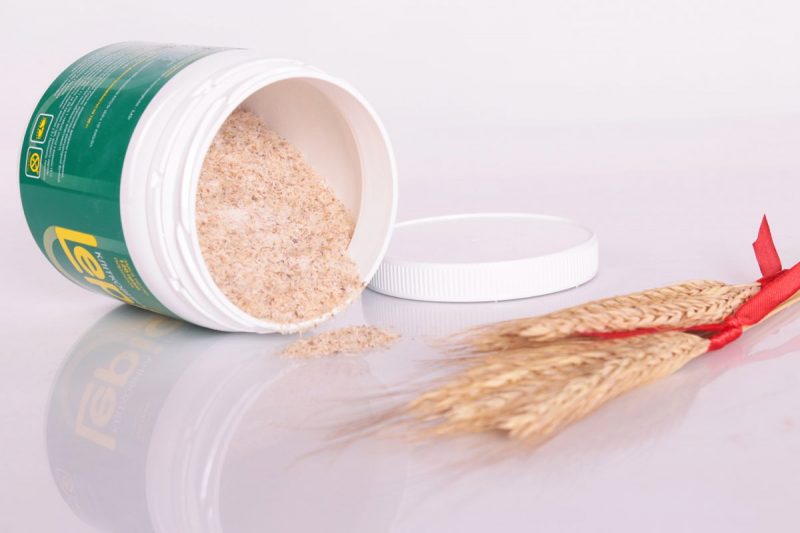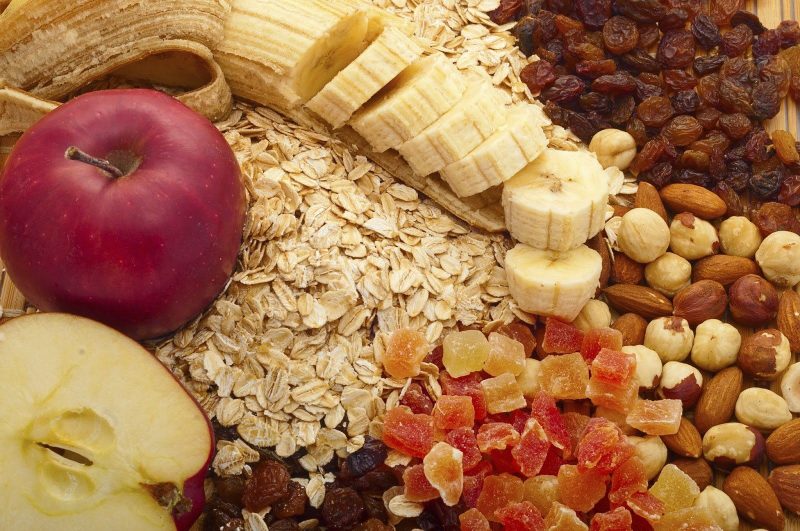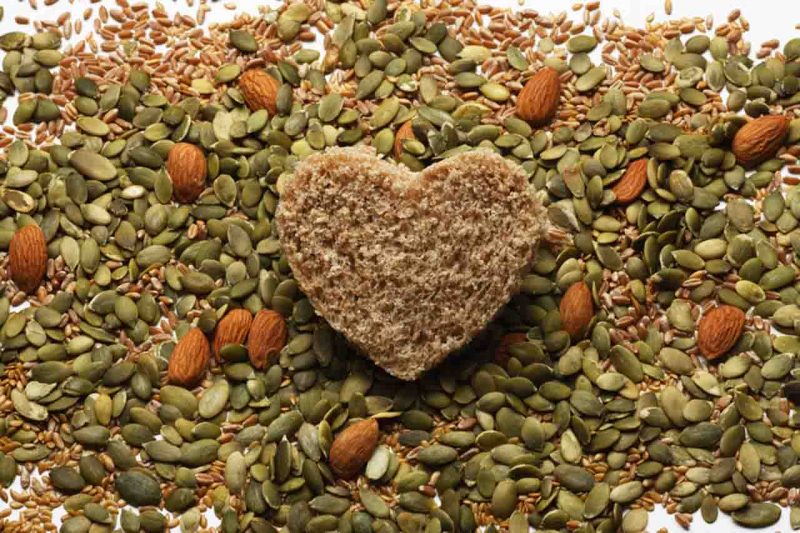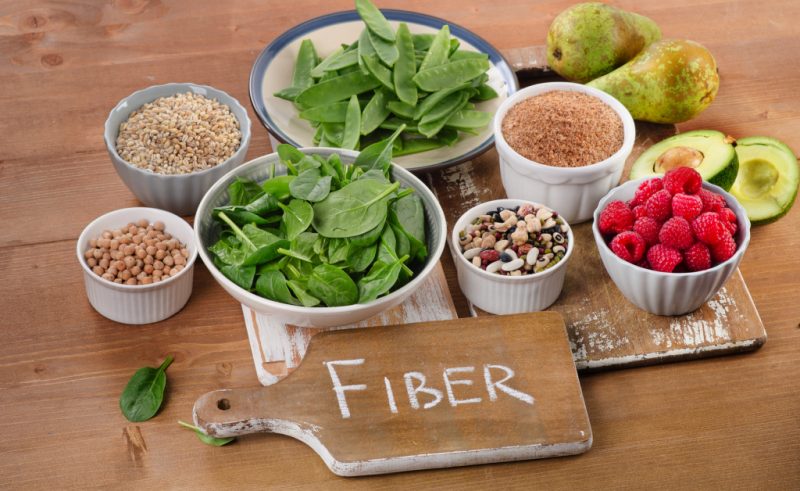An important component of the nutrition that modern people lack is fiber. In what products it is, probably everyone knows. But they choose refined food purified from plant fibers, which leads to the development of serious diseases. What is fiber and what is its benefit, it is interesting to know those who monitor their health.
Material Content:
What is fiber
Plant fiber or fiber is that part of plant products that cannot be digested in the gastrointestinal tract, but has a positive effect on human health.

In the digestive tract of people there are no enzymes that would help to absorb fiber, it reaches the large intestine unchanged. In the intestine, its cleavage begins due to intestinal bacteria, this increases the beneficial microflora.
Fiber is a collective concept. Plants consist of its elements in different proportions; the beneficial effect on the body depends on this.
The benefits of fiber for the body
Fiber-rich foods - various vegetables, fruits, legumes, and grains must be on the daily menu.

Their benefit is to cleanse the body of all the "excess":
- In the digestive tract, plant fibers absorb water and increase in volume, this gives a feeling of fullness, helps to reduce appetite.
- Fiber normalizes bowel function. It slows down the absorption of carbohydrates, its regular use reduces the risk of diabetes.
- Fiber absorbs "bad" cholesterol, which is found in bile, and removes it from the body. This inhibits the development of diseases of the heart and blood vessels, the formation of stones in the gall bladder.
- Once in the intestines, it becomes food for the bacteria that live there. Thanks to this, beneficial microorganisms begin to multiply, a normal intestinal microflora is created, and strong immunity is formed.
- Plant fibers mechanically stimulate the intestines, prevent the formation of malignant neoplasms. Their use is the prevention of cancer of the rectum and colon.
Fiber establishes the normal functioning of the body, therefore, serves as a prevention of nervous disorders, hypertension, diabetes, allergies, etc.
Daily fiber requirement
It is recommended to eat from 30 to 50 g of fiber daily. Such an amount can be obtained by eating about 3 fruits, 3 medium vegetables, 4 servings of wholemeal bread or bran bread each day.

There are various dietary supplements that contain various forms of fiber. For example, bran in powder or granular form.
Bran is rich in cellulose and hemicellulose, but there is little pectin in them. There are combined forms of fiber that contain all the possible dietary fiber needed by the body. On sale there are also sweet bars for a healthy diet, enriched with fiber, they can be eaten instead of cakes.
Table: Fiber-rich foods
A person receives fiber only with plant foods. This can be seen from the table.

Fiber table for various types of foods:
| Products | The average amount of fiber per 100 g |
|---|---|
| Legumes | 5,0–25,0 |
| Fruits and vegetables | 2,5–5,8 |
| Nuts | 3,8–4,2 |
| Greenery | 4,0 |
| Sunflower seeds | 2,0–4,5 |
| Cereals (oatmeal, rice, buckwheat) | 8,0–15,5 |
| Bran | 44,0 |
A lot of fiber is found in bran. Therefore, whole grain bread with bran is so useful, but with gastritis and inflammatory processes in the gastrointestinal tract, the use of coarse fiber is limited.
How to use it for health
For normal life, a person needs fiber. If you can’t fully get this product with plant foods, you can use dry fiber, which is sold in stores and pharmacies. It is added to kefir, yogurt, vegetable and fruit salads, and pastries.

The correct way to use:
- Mix 2 tbsp. l fiber with yogurt, kefir, juice, fruit or vegetable puree.
- After eating, do not eat for half an hour.
- Dry fiber should be washed down with plenty of water (2-3 glasses).
The use of excess fiber can be harmful to the body, everything must be observed. It’s better to start taking the product with a minimum dose, to make sure there is no allergy to it.
Initially take 1/2 tsp. dry fiber half an hour before meals. After a week, the dose is increased to 1 tsp. After 1.5 months of gradual addition to the diet, fiber is consumed in 3 tsp. once a day before meals.
After 2 months of admission, a break of 1 month is recommended. Typically, fiber packaging contains detailed instructions for use and dosage.
Soluble and insoluble fiber: what is the difference
Dietary fiber is divided into soluble and insoluble. Soluble polysaccharides (pectins, gum, gums, mucus) are completely soluble in water. What foods contain fiber of this kind?

Pectin is present in all plant foods, but most of all in vegetables, fruits, berries. They are responsible for the normal level of cholesterol and blood sugar, gastrointestinal tract health, and cancer prevention.
Gummi, mucus and gums are found in oatmeal and beans. These plant fibers have enveloping properties, play the role of binders in the process of removal from the tissues of the final products of metabolism, toxins, bile acids.
Insoluble dietary fiber includes:
- cellulose;
- hemicellulose;
- lignins.
They prevail in cereals - bran, cereals, wholemeal bread. This type of dietary fiber helps eliminate constipation and remove toxins from the body.With regular use, it serves as a prophylaxis of cardiovascular diseases, reduces the level of "bad" cholesterol and blood sugar.

To obtain insoluble fiber, cereals are used, soluble is produced from berries and fruits. With prolonged heat treatment of vegetables, the amount of fiber in them decreases by about 2 times.
Contraindications and harm
There is an individual intolerance to polysaccharides, each person has a bacterial flora. Sometimes, using foods rich in fiber, you can earn increased gas formation, due to the active activity of bacteria. In such cases, it is recommended to use fiber in small portions, accustoming the body to entering it with food gradually.

Other problems:
- Plant fibers, with prolonged use in food, cause a deficiency of fat-soluble vitamins and trace elements, as they contribute to their elimination from the body.
- You need to remember about the drinking regimen, fiber absorbs water. You need to drink at least 1.5 liters of fluid per day, otherwise there will be problems with constipation.
- With inflammation of the intestines and pancreas, the use of fiber will lead to an exacerbation of the disease.
Plant fibers are of great importance in nutrition, bring the body more benefits than harm. Adequate amounts of fiber in the diet help maintain good health and well-being.












